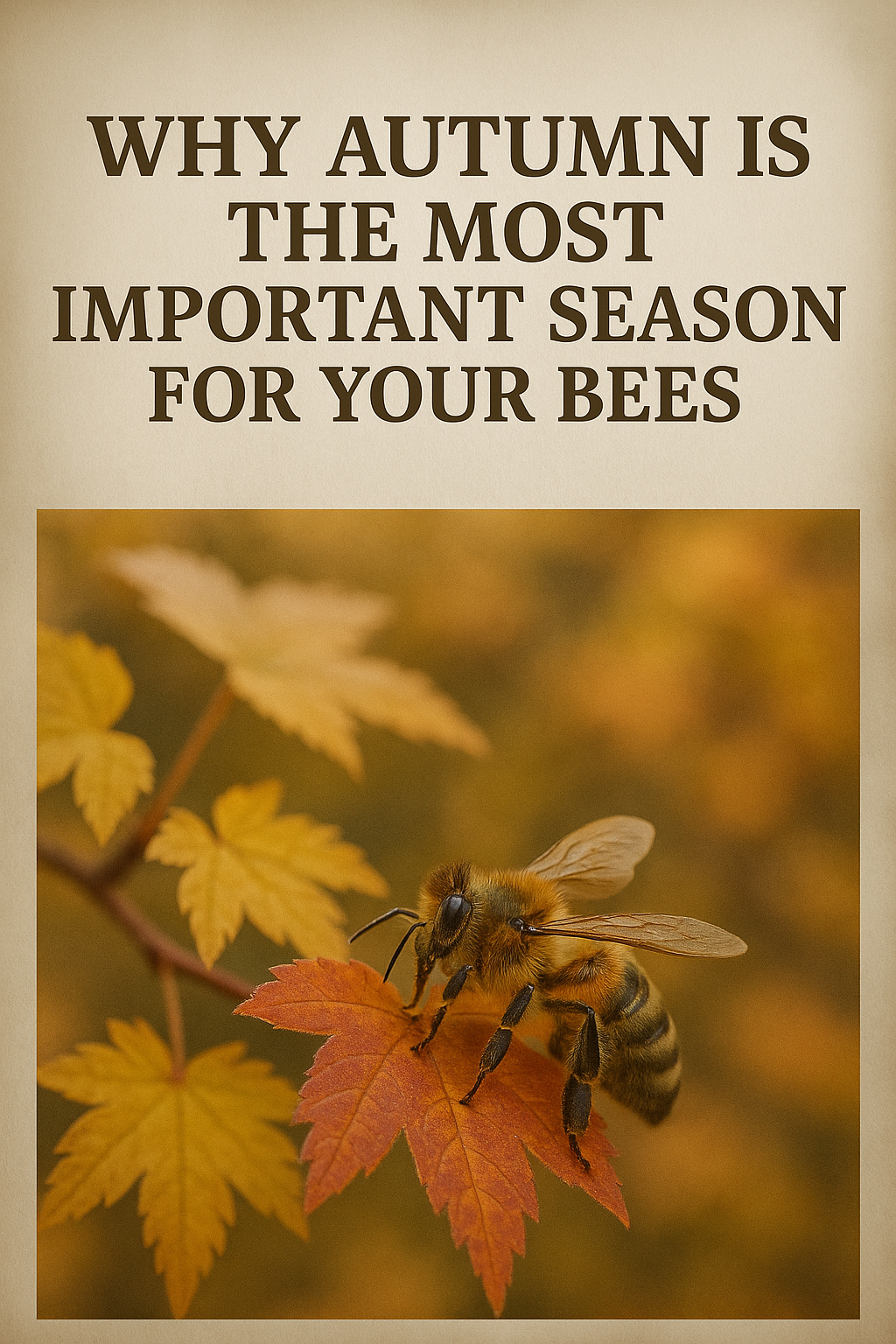
Why Autumn Is the MOST Important Season for Your Bees 🐝
Share
When most people think of beekeeping, summer comes to mind - buzzing hives, jars of honey, and long sunny days. But ask any experienced beekeeper, and they'll tell you: autumn is the season that decides whether your bees will survive winter and thrive in spring. Here's why autumn is the most important time for your colonies - and what you should be doing right now.

🌸 1. Forage Fades Fast
By early autumn, nectar and pollen sources decline sharply. Even on sunny days, bees may come home empty. While ivy and late bloomers like asters or sedums can provide a final boost, most colonies will need careful monitoring. Weigh your hives or check stores regularly — if food is light, feed sugar syrup before the cold closes in.
👉 Shop syrup and feeders to keep colonies topped up

🐝 2. Raising the Winter Generation
Autumn bees aren’t like their summer sisters. Known as “winter bees,” they’re built with extra fat stores and stronger immunity so they can survive for months. Their survival depends on the conditions they’re raised in now. Poor nutrition, high mite levels, or stress can leave winter bees weak, which often means colony losses before spring. So make sure winter bees are raised strong by providing good nutrition and keeping colonies healthy now. Avoid unnecessary inspections that break up the cluster or stress the colony.
🦠 3. Varroa Control Is Critical

Varroa mites are most damaging in autumn, because they shorten the lifespan of winter bees. A heavy mite load now often means colony collapse before spring.
Beekeepers use two main methods to check mite levels:
-
Sticky board test: A board placed under the hive floor catches falling mites, which you can count after a few days.
-
Sugar roll test: A small cup of bees is dusted with icing sugar and gently shaken in a mesh jar. The sugar dislodges mites, letting you count them before releasing the bees.
Monitoring in autumn helps you decide whether treatments are needed to protect your winter generation.

👑 4. Queen Quality Shapes the Colony
A strong colony going into winter depends on a strong queen. If she’s failing, the hive won’t raise enough healthy bees for the cold months.
Look for:
-
Solid brood patterns: Brood cells should form neat, compact areas. Patchy brood with empty cells scattered in between is a warning sign.
-
Appropriate drone numbers: By autumn, drone brood should be reduced. Too many drones may mean the queen is running out of sperm.
-
Egg-laying: A good queen still lays steadily into autumn, even if it’s slowing down.
If the queen is failing, it may be too late to replace her, but knowing this helps you plan for early spring requeening.
❄️ 5. Preparing the Hive for Cold and Damp
Cold rarely kills bees — dampness does. In winter, condensation dripping inside a hive can chill and weaken the cluster.
Most modern hives already allow some airflow thanks to spacers and mesh floors, but it’s important not to block ventilation. Some beekeepers use the “matchstick method” — slipping a matchstick under each corner of the crownboard to create a small gap for airflow. This isn’t always necessary, but it shows how vital it is to prevent damp.

👉 A varroa mesh floor not only helps monitor mite levels but also improves airflow, reducing moisture buildup inside the hive. Shop varroa mesh sheets here.
Check roofs for leaks, make sure rain drains away, and always keep the hive dry but not drafty.
🐭 6. Guarding Against Autumn Pests
As natural forage declines, pests turn their attention to hives. Wasps and robbing bees will attack weaker colonies, while mice look for warm nesting spots.
Prevent problems by:
-
Reducing hive entrances 👉 Hive Entrances Available to Buy Here
-
Installing mouseguards before cold sets in
-
Keeping your apiary tidy and free of exposed honey frames
These small steps can save a colony from unnecessary stress.
📊 7. Record-Keeping for Future Success

Strong beekeepers don’t just manage the season — they learn from it. Autumn is the perfect time to make notes on:
-
Hive weights and stores
-
How much syrup or fondant you fed
-
Mite counts and treatments
-
Queen and brood quality
Over time, these records help you predict colony needs more accurately and improve your beekeeping year after year.
Conclusion
Autumn is the turning point in the beekeeping year. It’s when winter bees are raised, queens prove their strength, and colonies prepare for the hardest season. By feeding wisely, controlling varroa, keeping hives dry, and recording your work, you give your bees the best chance to survive — and thrive when spring returns.
👉 Get your colonies winter-ready with autumn beekeeping essentials — from feeders to fondant and protective clothing.
